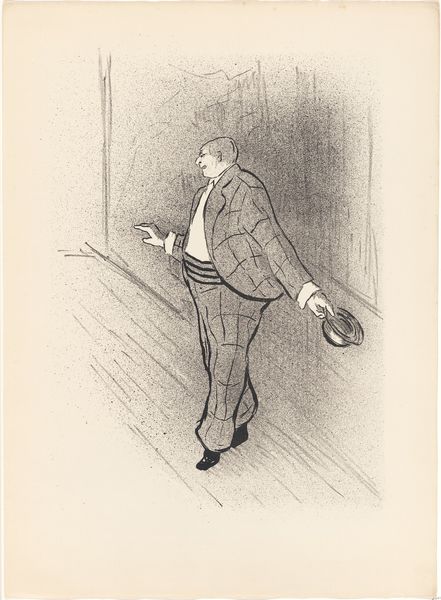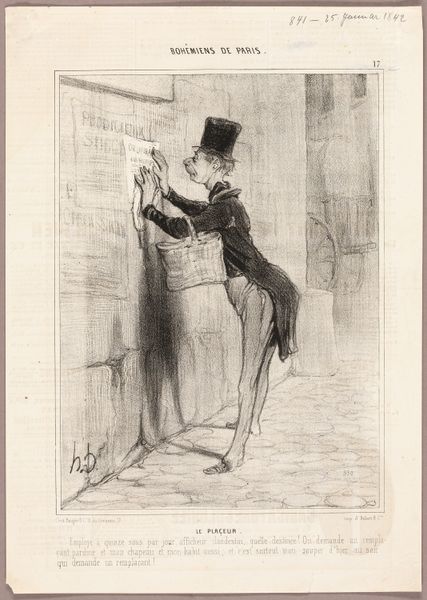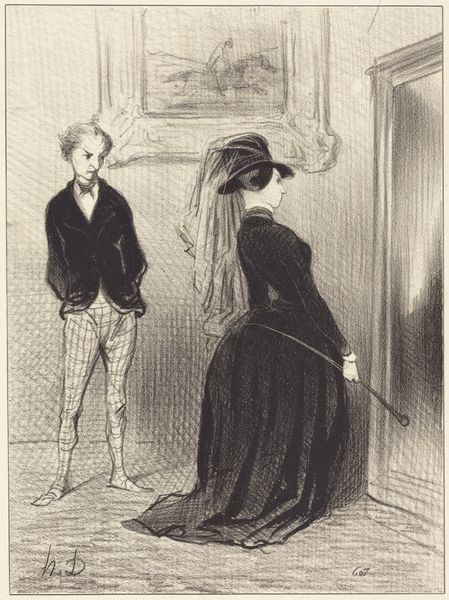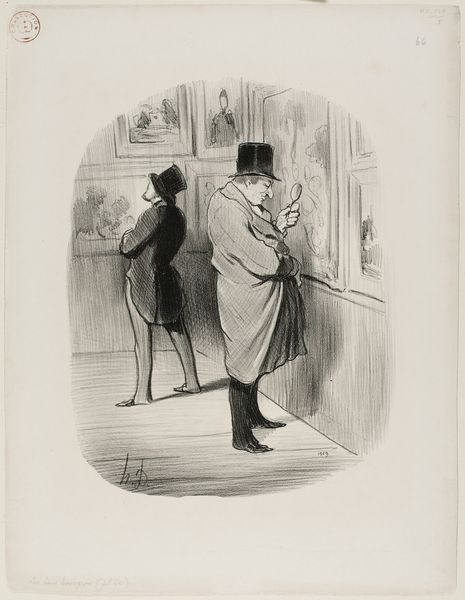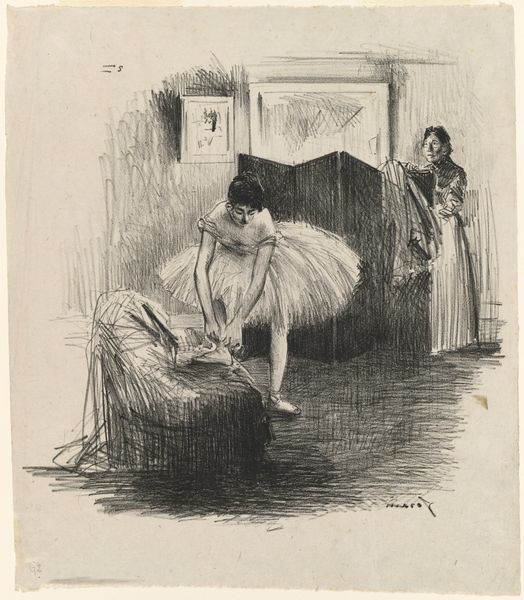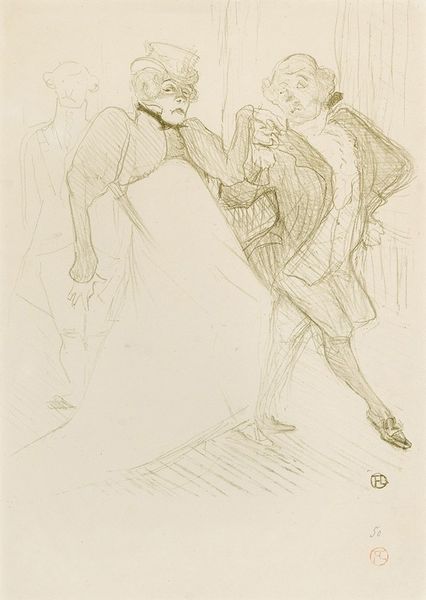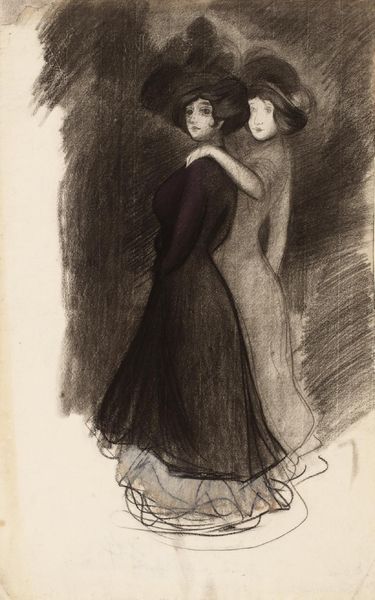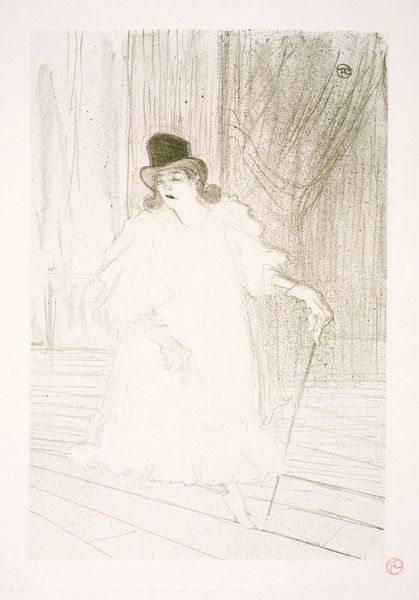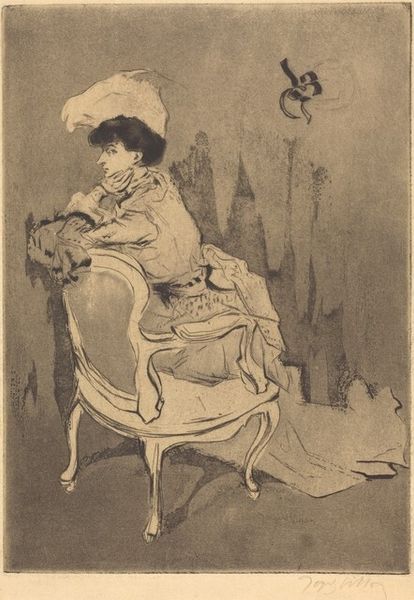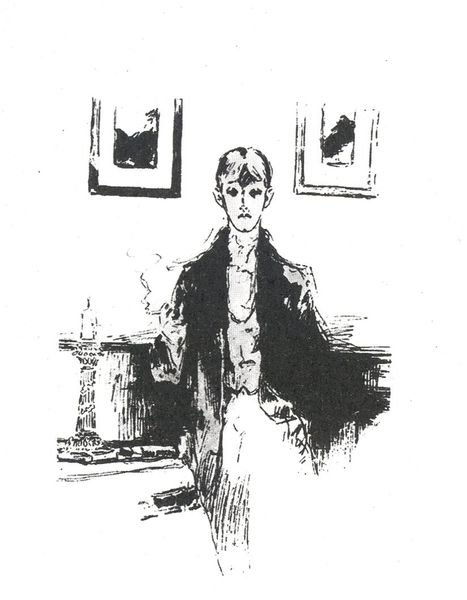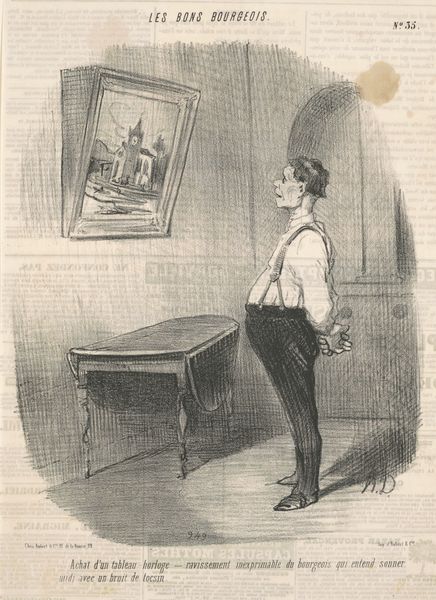
Copyright: Public Domain: Artvee
Henri de Toulouse-Lautrec created this lithograph, called The Fainting Fit, sometime in the 1890s. It depicts a scene in which a woman appears to swoon into the arms of a man who supports her. Made in France, this work captures the cultural fascination with female hysteria during the late 19th century. Medical and scientific discourse at the time pathologized women's emotions, often attributing symptoms like fainting to supposed weaknesses of the female nervous system. Lautrec, known for his depictions of Parisian nightlife and the demimonde, here represents an ambiguous encounter, leaving it to the viewer to wonder if the scene is one of genuine concern or social melodrama. The stark use of black ink creates a dramatic contrast, emphasizing the woman's vulnerability and the man's stoic posture. The image's meaning is contingent on its historical moment and cultural context. Further research into medical texts, popular literature, and visual culture of the period can provide a richer understanding of the artwork's social commentary.
Comments
No comments
Be the first to comment and join the conversation on the ultimate creative platform.
